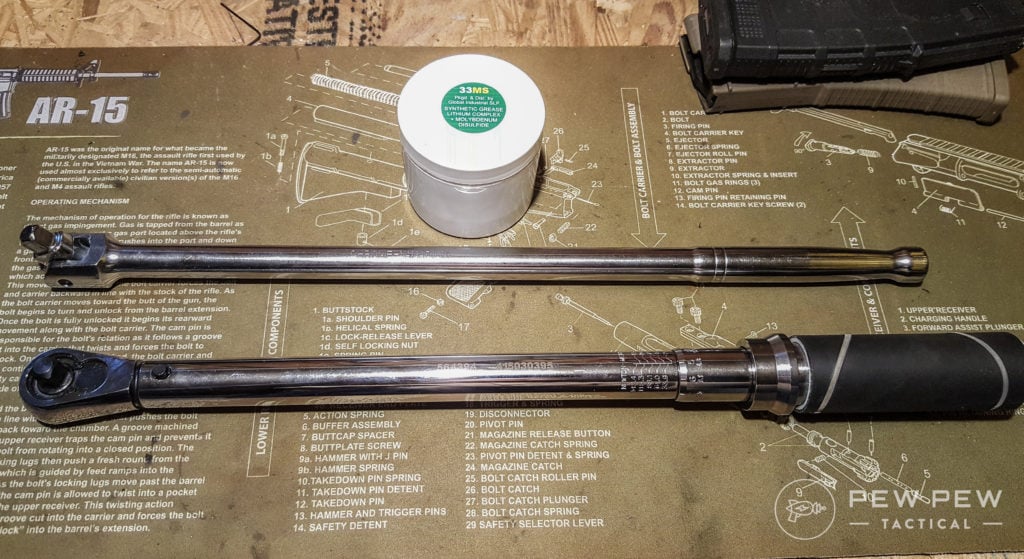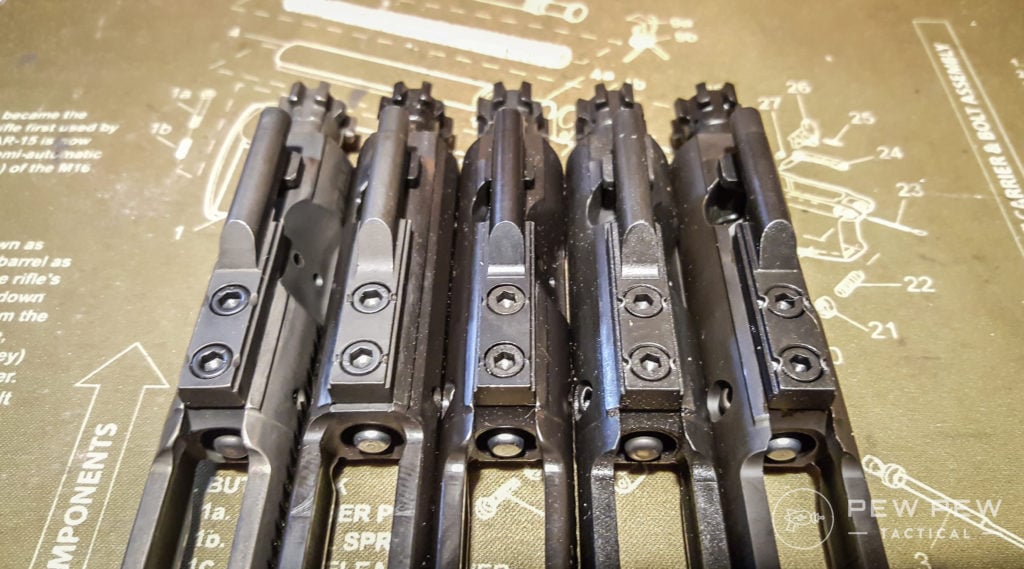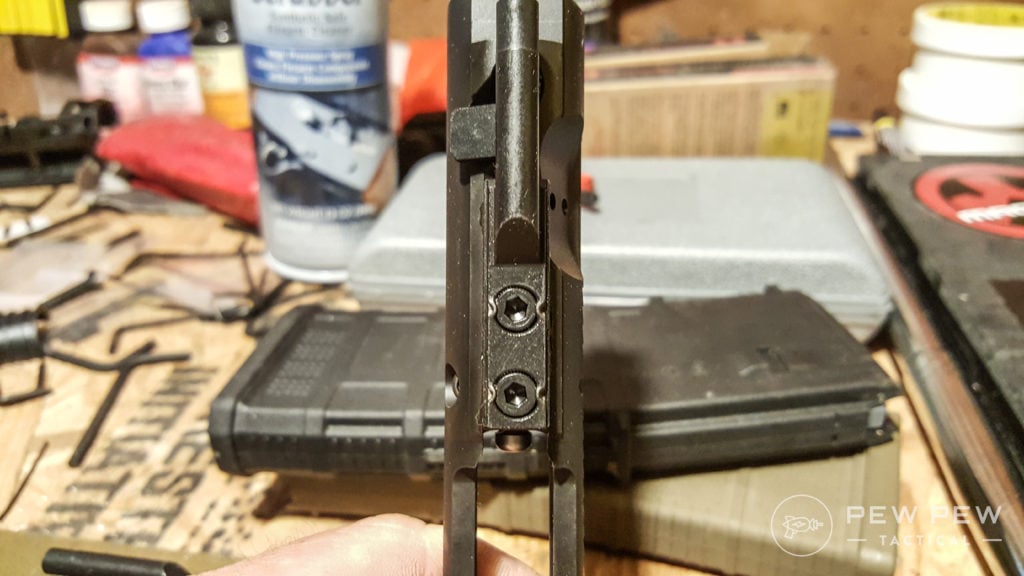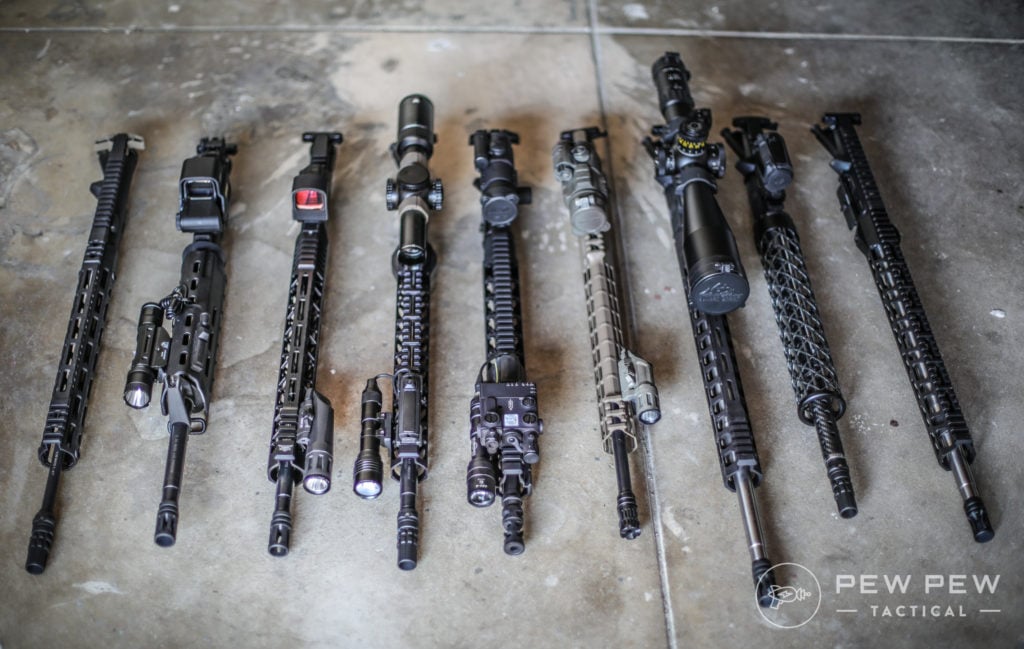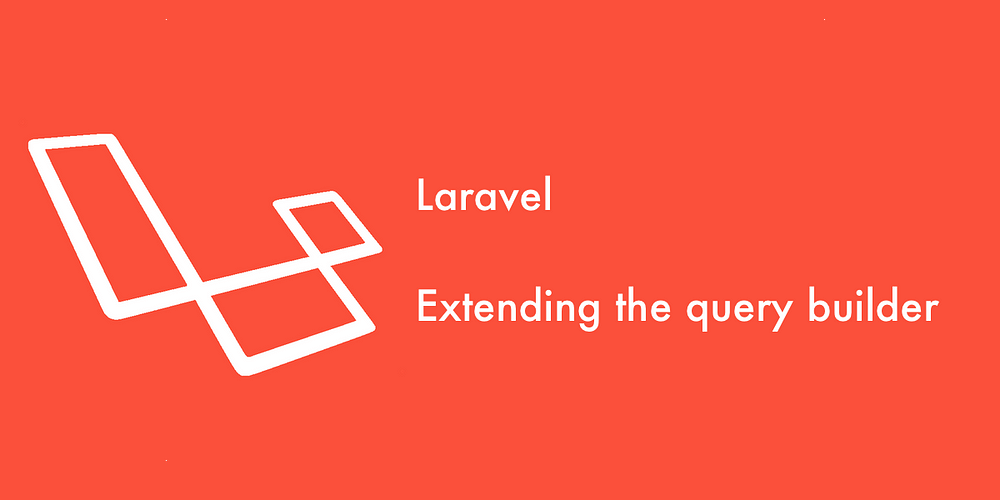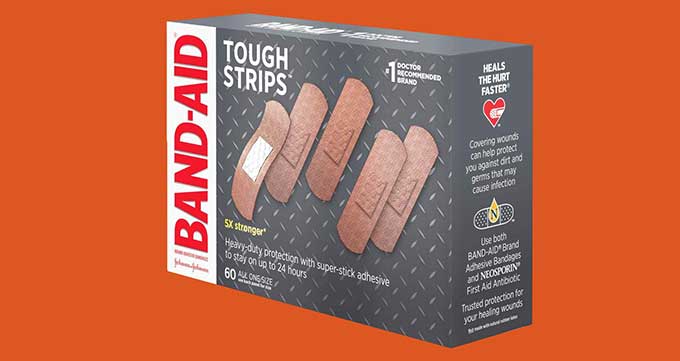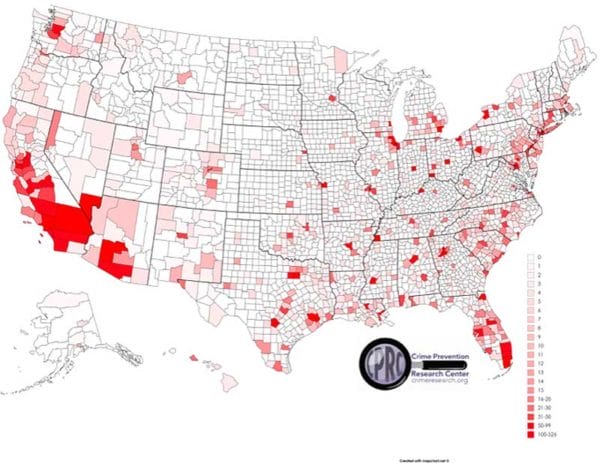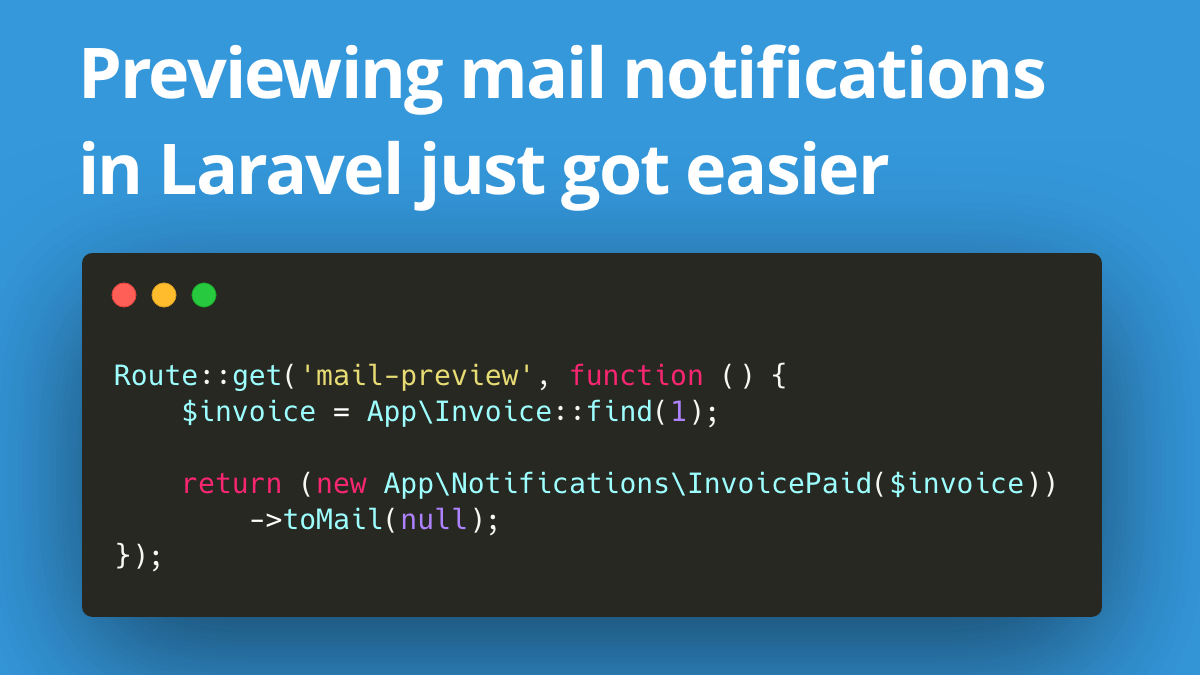Smoothie
Some fruity additions to Laravel’s Eloquent:
⚠️ Note: only MySQL is tested and actively supported.
Miscellaneous
Save model and restore modified attributes
This package adds a new option restore to the save method:
$model->save(['restore' => true]);
This forces the model to refresh its original array of attributes from the database before saving. It’s useful when your database row has changed outside the current $model instance, and you need to make sure that the $model‘s current state will be saved exactly, even restoring attributes that haven’t changed in the current instance:
$model1 = Article::find(1); $model2 = Article::find(1); $model2->title = 'new title'; $model2->save(); $model1->save(['restore' => true]); // the original title will be restored // because it hasn't changed in `$model1`
To use this option, you need your model to extend the Baril\Smoothie\Model class instead of Illuminate\Database\Eloquent\Model.
Update only
Laravel’s native update method will not only update the provided fields, but also whatever properties of the model were previously modified:
$article = Article::create(['title' => 'old title']); $article->title = 'new title'; $article->update(['subtitle' => 'new subtitle']); $article->fresh()->title; // "new title"
This package provides another method called updateOnly, that will update the provided fields but leave the rest of the row alone:
$article = Article::create(['title' => 'old title']); $article->title = 'new title'; $article->updateOnly(['subtitle' => 'new subtitle']); $article->fresh()->title; // "old title" $article->title; // "new title" $article->subtitle; // "new subtitle"
To use this method, you need your model to extend the Baril\Smoothie\Model class instead of Illuminate\Database\Eloquent\Model.
Explicitly order the query results
The package adds the following method to Eloquent collections:
$collection = YourModel::all()->sortByKeys([3, 4, 2]);
It allows for explicit ordering of collections by primary key. In the above example, the returned collection will contain (in this order):
- model with id 3,
- model with id 4,
- model with id 2,
- any other models of the original collection, in the same order as before calling
sortByKeys.
Similarly, using the findInOrder method on models or query builders, instead of findMany, will preserve the order of the provided ids:
$collection = Article::findMany([4, 5, 3]); // we're not sure that the article // with id 4 will be the first of // the returned collection $collection = Article::findInOrder([4, 5, 3]); // now we're sure
In order to use these methods, you need Smoothie’s service provider to be registered in your config\app.php (or use package auto-discovery):
return [ // ... 'providers' => [ Baril\Smoothie\SmoothieServiceProvider::class, // ... ], ];
Timestamp scopes
The Baril\Smoothie\Concerns\ScopesTimestamps trait provides some scopes for models with created_at and updated_at columns:
$query->orderByCreation($direction = 'asc'),$query->createdAfter($date, $strict = false) (the $date argument can be of any datetime-castable type, and the $strict parameter can be set to true if you want to use a strict inequality),$query->createdBefore($date, $strict = false),$query->createdBetween($start, $end, $strictStart = false, $strictEnd = false),$query->orderByUpdate($direction = 'asc'),$query->updatedAfter($date, $strict = false),$query->updatedBefore($date, $strict = false),$query->updatedBetween($start, $end, $strictStart = false, $strictEnd = false).
Debugging
This package adds a debugSql method to the Builder class. It is similar as toSql except that it returns an actual SQL query where bindings have been replaced with their values.
Article::where('id', 5)->toSql(); // "SELECT articles WHERE id = ?" -- WTF? Article::where('id', 5)->debugSql(); // "SELECT articles WHERE id = 5" -- much better
In order to use this method, you need Smoothie’s service provider to be registered in your config\app.php (or use package auto-discovery).
(Credit for this method goes to Broutard, thanks!)
Field aliases
Basic usage
The Baril\Smoothie\Concerns\AliasesAttributes trait provides an easy way to normalize the attributes names of a model if you’re working with an existing database with column namings you don’t like.
There are 2 different ways to define aliases:
- define a column prefix: all columns prefixed with it will become magically accessible as un-prefixed attributes,
- define an explicit alias for a given column.
Let’s say you’re working with the following table (this example comes from the blog application Dotclear):
dc_blog blog_id blog_uid blog_creadt blog_upddt blog_url blog_name blog_desc blog_status
Then you could define your model as follows:
class Blog extends Model { const CREATED_AT = 'blog_creadt'; const UPDATED_AT = 'blog_upddt'; protected $primaryKey = 'blog_id'; protected $keyType = 'string'; protected $columnsPrefix = 'blog_'; protected $aliases = [ 'description' => 'blog_desc', ]; }
Now the blog_id column can be simply accessed this way: $model->id. Same goes for all other columns prefixed with blog_.
Also, the blog_desc column can be accessed with the more explicit alias description.
The original namings are still available. This means that there are actually 3 different ways to access the blog_desc column:
$model->blog_desc (original column name),$model->desc (because of the blog_ prefix),$model->description (thanks to the explicit alias).
Note: you can’t have an alias (explicit or implicit) for another alias. Aliases are for actual column names only.
Collisions and priorities
If an alias collides with a real column name, it will have priority over it. This means that in the example above, if the table had a column actually named desc or description, you wouldn’t be able to access it any more. You still have the possibility to define another alias for the column though.
class Article { protected $aliases = [ 'title' => 'meta_title', 'original_title' => 'title', ]; }
In the example above, the title attribute of the model returns the value of the meta_title column in the database. The value of the title column can be accessed with the original_title attribute.
Also, explicit aliases have priority over aliases implicitely defined by a column prefix. This means that when an "implicit alias" collides with a real column name, you can define an explicit alias that restores the original column name:
class Article { protected $aliases = [ 'title' => 'title', ]; protected $columnsPrefix = 'a_'; }
Here, the title attribute of the model will return the value of the title column of the database. The a_title column can be accessed with the a_title attribute (or you can define another alias for it).
Accessors, casts and mutators
You can define accessors either on the original attribute name, or the alias, or both.
- If there’s an accessor on the original name only, it will always apply, whether you access the attribute with its original name or its alias.
- If there’s an accessor on the alias only, it will apply only if you access the attribute using its alias.
- If there’s an accessor on both, each will apply individually (and will receive the original
$value).
class Blog extends Model { const CREATED_AT = 'blog_creadt'; const UPDATED_AT = 'blog_upddt'; protected $primaryKey = 'blog_id'; protected $keyType = 'string'; protected $columnsPrefix = 'blog_'; protected $aliases = [ 'description' => 'blog_desc', ]; public function getPrDescAttribute($value) { return trim($value); } public function getDescriptionAttribute($value) { return htmlentities($value); } } $blog->pr_desc; // will return the trimmed description $blog->desc; // will return the trimmed description $blog->description; // will return the untrimmed, HTML-encoded description
The same logic applies to casts and mutators.
⚠️ Note: if you define a cast on the alias and an accessor on the original attribute name, the accessor won’t apply to the alias, only the cast will.
Trait conflict resolution
The AliasesAttributes trait overrides the getAttribute and setAttribute methods of Eloquent’s Model class. If you’re using this trait with another trait that override the same methods, you can just alias the other trait’s methods to getUnaliasedAttribute and setUnaliasedAttribute. AliasesAttributes::getAttribute and AliasesAttributes::setAttribute will call getUnaliasedAttribute or setUnaliasedAttribute once the alias is resolved.
class MyModel extends Model { use AliasesAttributes, SomeOtherTrait { AliasesAttributes::getAttribute insteadof SomeOtherTrait; SomeOtherTrait::getAttribute as getUnaliasedAttribute; AliasesAttributes::setAttribute insteadof SomeOtherTrait; SomeOtherTrait::setAttribute as setUnaliasedAttribute; } }
Accessor cache
Basic usage
Sometimes you define an accessor in your model that requires some computation time or executes some queries, and you don’t want to go through the whole process everytime you call this accessor. That’s why this package provides a trait that "caches" (in a protected property of the object) the results of the accessors.
You can define which accessors are cached using either the $cacheable property or the $uncacheable property. If none of them are set, then everything is cached.
class MyModel extends Model { use \Baril\Smoothie\Concerns\CachesAccessors; protected $cacheable = [ 'some_attribute', 'some_other_attribute', ]; } $model = MyModel::find(1); $model->some_attribute; // cached $model->yet_another_attribute; // not cached
Clearing cache
The cache for an attribute is cleared everytime this attribute is set. If you have an accessor for an attribute A that depends on another attribute B, you probably want to clear A’s cache when B is set. You can use the $clearAccessorCache property to define such dependencies:
class User extends Model { use \Baril\Smoothie\Concerns\CachesAccessors; protected $clearAccessorCache = [ 'first_name' => ['full_name', 'name_with_initial'], 'last_name' => ['full_name', 'name_with_initial'], ]; public function getFullNameAttribute() { return $this->first_name . ' ' . $this->last_name; } public function getNameWithInitialAttribute() { return substr($this->first_name, 0, 1) . '. ' . $this->last_name; } } $user = new User([ 'first_name' => 'Jean', 'last_name' => 'Dupont', ]); echo $user->full_name; // "Jean Dupont" $user->first_name = 'Lazslo'; echo $user->full_name; // "Lazslo Dupont": cache has been cleared
Cache and aliases
If you want to use both the AliasesAttributes trait and the CachesAccessors trait in the same model, the best way to do it is to use the AliasesAttributesWithCache trait, which merges the features of both traits properly. Setting an attribute or an alias will automatically clear the accessor cache for all aliases of the same attribute.
Fuzzy dates
The package provides a modified version of the Carbon class that can handle SQL "fuzzy" dates (where the day, or month and day, are zero).
With the original version of Carbon, such dates wouldn’t be interpreted properly, for example 2010-10-00 would be interpreted as 2010-09-30.
With this version, zeros are allowed. An additional method is provided to determine if the date is fuzzy:
$date = Baril\Smoothie\Carbon::createFromFormat('Y-m-d', '2010-10-00'); $date->day; // will return null $date->isFuzzy(); // will return true if month and/or day is zero
The format and formatLocalized methods now have two additional (optional) arguments $formatMonth and $formatYear. If the date is fuzzy, the method will automatically fallback to the appropriate format:
$date = Baril\Smoothie\Carbon::createFromFormat('Y-m-d', '2010-10-00'); $date->format('d/m/Y', 'm/Y', 'Y'); // will display "10/2010"
⚠️ Note: because a fuzzy date can’t convert to a timestamp, a date like 2010-10-00 is transformed to 2010-10-01 internally before conversion to timestamp. Thus, any method or getter that relies on the timestamp value might return an "unexpected" result:
$date = Baril\Smoothie\Carbon::createFromFormat('Y-m-d', '2010-10-00'); $date->dayOfWeek; // will return 5, because October 1st 2010 was a friday
If you need fuzzy dates in your models, use the Baril\Smoothie\Concerns\HasFuzzyDates trait. Then, fields cast as date or datetime will use this modified version of Carbon:
class Book extends \Illuminate\Database\Eloquent\Model { use \Baril\Smoothie\Concerns\HasFuzzyDates; protected $casts = [ 'is_available' => 'boolean', 'release_date' => 'date', // will allow fuzzy dates ]; }
Alternatively, you can extend the Baril\Smoothie\Model class to achieve the same result. This class already uses the HasFuzzyDates trait (as well as some other traits described in the subsequent sections):
class Book extends \Baril\Smoothie\Model { protected $casts = [ 'is_available' => 'boolean', 'release_date' => 'date', // will allow fuzzy dates ]; }
⚠️ Note: you will need to disable MySQL strict mode in your database.php config file in order to use fuzzy dates:
return [ 'connections' => [ 'mysql' => [ 'strict' => false, // ... ], ], // ... ];
If you don’t want to disable strict mode, another option is to use 3 separate columns and merge them into one. To achieve this easily, you can use the mergeDate method in the accessor, and the splitDate method is the mutator:
class Book extends \Illuminate\Database\Eloquent\Model { use \Baril\Smoothie\Concerns\HasFuzzyDates; public function getReleaseDateAttribute() { return $this->mergeDate( 'release_date_year', 'release_date_month', 'release_date_day' ); } public function setReleaseDateAttribute($value) { $this->splitDate( $value, 'release_date_year', 'release_date_month', 'release_date_day' ); } }
The last 2 arguments of both methods can be omitted, if your column names use the suffixes _year, _month and _day. The following example is similar as the one above:
class Book extends \Illuminate\Database\Eloquent\Model { use \Baril\Smoothie\Concerns\HasFuzzyDates; public function getReleaseDateAttribute() { return $this->mergeDate('release_date'); } public function setReleaseDateAttribute($value) { $this->splitDate($value, 'release_date'); } }
⚠️ Note: your _month and _day columns must be nullable, since a "zero" month or day will be stored as null.
Mutually-belongs-to-many-selves relationship
Usage
This new type of relationship defines a many-to-many, mutual relationship to the same table/model. Laravel’s native BelongsToMany relationship can already handle self-referencing relationships, but with a direction (for example sellers/buyers). The difference is that the MutuallyBelongsToManySelves relationship is meant to handle "mutual" relationships (such as friends):
class User extends \Illuminate\Database\Eloquent\Model { use \Baril\Smoothie\Concerns\HasMutualSelfRelationships; public function friends() { return $this->mutuallyBelongsToManySelves(); } }
With this type of relationship, attaching $user1 to $users2‘s friends will implicitely attach $user2 to $user1‘s friends as well:
$user1->friends()->attach($user2->id); $user2->friends()->get(); // contains $user1
Similarly, detaching one side of the relation will detach the other as well:
$user2->friends()->detach($user1->id); $user1->friends()->get(); // doesn't contain $user2 any more
The full prototype for the mutuallyBelongsToManySelves method is similar to belongsToMany, without the first argument (which we don’t need since we already know that the related class is the class itself):
public function mutuallyBelongsToManySelves( // Name of the pivot table (defaults to the snake-cased model name, // concatenated to itself with an underscore separator, // eg. "user_user"): $table = null, // First pivot key (defaults to the model's default foreign key, with // an added number, eg. "user1_id"): $firstPivotKey = null, // Second pivot key (the pivot keys can be passed in any order since // the relationship is mutual): $secondPivotKey = null, // Parent key (defaults to the model's primary key): $parentKey = null, // Relation name (defaults to the name of the caller method): $relation = null)
In order to use the mutuallyBelongsToManySelves method, your model needs to either use the Baril\Smoothie\Concerns\HasMutualSelfRelationships, or extend the Baril\Smoothie\Model class.
Cleanup command
In order to avoid duplicates, the MutuallyBelongsToManySelves class will ensure that attaching $model1 to $model2 will insert the same pivot row as attaching $model2 to $model1: the key defined as the first pivot key of the relationship will always receive the smaller id. In case you’re working with pre-existing data, and you’re not sure that the content of your pivot table follows this rule, you can use the following Artisan command that will check the data and fix it if needed:
php artisan smoothie:fix-pivots "App\\YourModelClass" relationName
N-ary many-to-many relationships
Let’s say that you’re building a project management app. Each user of your app has many roles in your ACL system: projet manager, developer… But each role applies to a specific project rather than the whole app.
Your basic database structure probably looks something like this:
projects id - integer name - string roles id - integer name - string users id - integer name - string project_role_user project_id - integer role_id - integer user_id - integer
Of course, you could define classic belongsToMany relations between your models, and even add a withPivot clause to include the 3rd pivot column:
class User extends Model { public function projects() { return $this->belongsToMany(Project::class, 'project_role_user')->withPivot('role_id'); } public function roles() { return $this->belongsToMany(Role::class, 'project_role_user')->withPivot('project_id'); } }
It won’t be very satisfactory though, because:
- querying
$user->projects() or $user->roles() might return duplicated results (in case the user has 2 different roles in the same project, or the same role in 2 different projects),
- Both relations are not related to one another, so there’s no elegant way to retrieve the user’s role for a specific project, or the projects where the user has a specific role.
That’s where the belongsToMultiMany relation comes in handy.
Setup
Step 1: add a primary key to your pivot table.
class AddPrimaryKeyToProjectRoleUserTable extends Migration { public function up() { Schema::table('project_role_user', function (Blueprint $table) { $table->increments('id')->first(); }); } public function down() { Schema::table('project_role_user', function (Blueprint $table) { $table->dropColumn('id'); }); } }
Step 2: have your model use the Baril\Smoothie\Concerns\HasMultiManyRelationships trait (or extend the Baril\Smoothie\Model class).
Step 3: define your relations with belongsToMultiMany instead of belongsToMany. The prototype for both methods is the same except that:
- the 2nd argument (pivot table name) is required for
belongsToMultiMany (because we wouldn’t be able to guess it),
- there’s an additional 3rd (optional) argument which is the name of the primary key of the pivot table (defaults to
id).
class User extends Model { use HasMultiManyRelationships; public function projects() { return $this->belongsToMultiMany(Project::class, 'project_role_user'); } public function roles() { return $this->belongsToMultiMany(Role::class, 'project_role_user'); } }
You can do the same in all 3 classes, which means you will declare 6 different relations. Note that:
- To avoid confusion, it’s better (but not required) to give the same name to the similar relations (
Project::roles() and User::roles()).
- You don’t have to define all 6 relations if there are some of them you know you’ll never need.
Also, notice that the definition of the relations are independant: there’s nothing here that says that projects and roles are related to one another. The magic will happen only because they’re defined as "multi-many" relationships and because they’re using the same pivot table.
Querying the relations
Overall, multi-many relations behave exactly like many-to-many relations. There are 2 differences though.
The first difference is that multi-many relations will return "folded" (ie. deduplicated) results. For example, if $user has the role admin in 2 different projects, $user->roles will return admin only once (contrary to a regular BelongsToMany relation). Should you need to fetch the "unfolded" results, you can just chain the unfolded() method:
$user->roles()->unfolded()->get();
The 2nd (and most important) difference is that when you "chain" 2 (or more) "sibling" multi-many relations, the result returned by each relation will be automatically constrained by the previously chained relation(s).
Check the following example:
$roles = $user->projects->first()->roles;
Here, a regular BelongsToMany relation would have returned all roles related to the project, whether they’re attached to this $user or another one. But with multi-many relations, $roles contains only the roles of $user in this project.
If you ever need to, you can always cancel this behavior by chaining the all() method:
$project = $user->projects->first(); $roles = $project->roles()->all()->get();
Now $roles contains all the roles for $project, whether they come from this $user or any other one.
Another way to use the multi-many relation is as follows:
$project = $user->projects->first(); $roles = $user->roles()->for('project', $project)->get();
This will return only the roles that $user has on $project. It’s a nicer way to write the following:
$project = $user->projects->first(); $roles = $user->roles()->withPivot('project_id', $project->id)->get();
The arguments for the for method are:
- the name of the "other" relation in the parent class (here:
projects, as in the method User::projects()), or its singular version (project),
- either a model object or id, or a collection (of models or ids), or an array of ids.
Eager-loading
The behavior described above works with eager loading too:
$users = User::with('projects', 'projects.roles')->get(); $user = $users->first(); $user->projects->first()->roles; // only the roles of $user on this project
Similarly as the all() method described above, you can use withAll if you don’t want to constrain the 2nd relation:
$users = User::with('projects')->withAll('projects.roles')->get();
Note: for non multi-many relations, or "unconstrained" multi-many relations, withAll is just an alias of with:
$users = User::with('projects', 'status')->withAll('projects.roles')->get(); // can be shortened to: $users = User::withAll('projects', 'projects.roles', 'status')->get();
Querying relationship existence
Querying the existence of a relation will also have the same behavior:
User::has('projects.roles')->get();
The query above will return the users who have a role in any project.
Attaching / detaching related models
Attaching models to a multi-many relation will fill the pivot values for all the previously chained "sibling" multi-many relations
$user->projects()->first()->roles()->attach($admin); // The new pivot row will receive $user's id in the user_id column.
Detaching models from a relation will also take into account all the "relation chain":
$user->projects()->first()->roles()->detach($admin); // Will detach the $admin role from this project, for $user only. // Other admins of this project will be preserved.
Again, the behavior described above can be disabled by chaining the all() method:
$user->projects()->first()->roles()->all()->attach($admin); // The new pivot row's user_id will be NULL. $user->projects()->first()->roles()->all()->detach($admin); // Will delete all pivot rows for this project and the $admin role, // whoever the user is.
Multi-many relations "wrapper"
The WrapMultiMany relation provides an alternative way to handle multi-many relations. It can be used together with the BelongsToMultiMany relations or independantly.
Instead of looking at the ternary relation as six many-to-many relations that can be chained after another, we could look at it this way:
- a user has many role/project pairs,
- each of these pairs has one role and one project.
Of course, similarly, a role has many user/project pairs and a project has many role/user pairs.
To implement this, we could create a model for the pivot table and then define all relations manually, but the WrapMultiMany relation provides a quicker alternative.
class User extends Model { use HasMultiManyRelationships; public function authorizations() { return $this->wrapMultiMany([ 'project' => $this->belongsToMultiMany(Project::class, 'project_role_user'), 'role' => $this->belongsToMultiMany(Role::class, 'project_role_user'), ]); } }
The authorizations method above defines the following relations:
- a
HasMany relation from User to the pivot table,
- a
BelongsTo relation named project, from the pivot table to Project,
- a
BelongsTo relation named role, from the pivot table to Role.
You can query the relations like any regular relation, and even eager-load them:
$users = User::with('authorizations', 'authorizations.role', 'authorizations.project')->get(); foreach ($users as $user) { foreach ($user->authorizations as $authorization) { dump($authorization->role); dump($authorization->project); } }
You can use the following methods to insert or update data in the pivot table:
$user->authorizations()->attach($pivots, $additionalAttributes); $user->authorizations()->sync($pivots); $user->authorizations()->detach($pivots);
The $pivots argument can be of different types:
$pivots = $user->authorizations->first(); // a Model $pivots = $user->authorizations->slice(0, 2); // an EloquentCollection of Models $pivots = ['role_id' => $roleId, 'project_id' => $projectId]; // an associative array keyed by the column names... $pivots = ['role' => $roleId, 'project' => $projectId]; // ... or the relation names $pivots = ['role' => Role::first(), 'project' => Project::first()]; // ... where values can be ids or Models $pivots = [ ['role_id' => $roleId, 'project_id' => $projectId] ]; // an array of such associative arrays $pivots = collect([ ['role_id' => $roleId, 'project_id' => $projectId] ]); // or even a Collection
Orderable behavior
Adds orderable behavior to Eloquent models (forked from https://github.com/boxfrommars/rutorika-sortable).
Setup
First, add a position field to your model (see below how to change this name):
public function up() { Schema::create('articles', function (Blueprint $table) { // ... other fields ... $table->unsignedInteger('position'); }); }
Then, use the \Baril\Smoothie\Concerns\Orderable trait in your model. The position field should be guarded as it won’t be filled manually.
class Article extends Model { use \Baril\Smoothie\Concerns\Orderable; protected $guarded = ['position']; }
You need to set the $orderColumn property if you want another name than position:
class Article extends Model { use \Baril\Smoothie\Concerns\Orderable; protected $orderColumn = 'order'; protected $guarded = ['order']; }
Basic usage
You can use the following method to change the model’s position (no need to save it afterwards, the method does it already):
moveToOffset($offset) ($offset starts at 0 and can be negative, ie. $offset = -1 is the last position),moveToStart(),moveToEnd(),moveToPosition($position) ($position starts at 1 and must be a valid position),moveUp($positions = 1, $strict = true): moves the model up by $positions positions (the $strict parameter controls what happens if you try to move the model "out of bounds": if set to false, the model will simply be moved to the first or last position, else it will throw a PositionException),moveDown($positions = 1, $strict = true),swapWith($anotherModel),moveBefore($anotherModel),moveAfter($anotherModel).
$model = Article::find(1); $anotherModel = Article::find(10) $model->moveAfter($anotherModel); // $model is now positioned after $anotherModel, and both have been saved
Also, this trait:
- automatically defines the model position on the
create event, so you don’t need to set position manually,
- automatically decreases the position of subsequent models on the
delete event so that there’s no "gap".
$article = new Article(); $article->title = $request->input('title'); $article->body = $request->input('body'); $article->save();
This model will be positioned at MAX(position) + 1.
To get ordered models, use the ordered scope:
$articles = Article::ordered()->get(); $articles = Article::ordered('desc')->get();
(You can cancel the effect of this scope by calling the unordered scope.)
Previous and next models can be queried using the previous and next methods:
$entity = Article::find(10); $entity->next(10); // returns a QueryBuilder on the next 10 entities, ordered $entity->previous(5)->get(); // returns a collection with the previous 5 entities, in reverse order $entity->next()->first(); // returns the next entity
Mass reordering
The move* methods described above are not appropriate for mass reordering because:
- they would perform many unneeded queries,
- changing a model’s position affects other model’s positions as well, and can cause side effects if you’re not careful.
Example:
$models = Article::orderBy('publication_date', 'desc')->get(); $models->map(function($model, $key) { return $model->moveToOffset($key); });
The sample code above will corrupt the data because you need each model to be "fresh" before you change its position. The following code, on the other hand, will work properly:
$collection = Article::orderBy('publication_date', 'desc')->get(); $collection->map(function($model, $key) { return $model->fresh()->moveToOffset($key); });
It’s still not a good way to do it though, because it performs many unneeded queries. A better way to handle mass reordering is to use the saveOrder method on a collection:
$collection = Article::orderBy('publication_date', 'desc')->get(); // $collection is not a regular Eloquent collection object, it's a custom class // with the following additional method: $collection->saveOrder();
That’s it! Now the items’ order in the collection has been applied to the position column of the database.
To define the order explicitely, you can do something like this:
$collection = Status::all(); $collection->sortByKeys([2, 1, 5, 3, 4])->saveOrder();
Note: Only the models within the collection are reordered / swapped between one another. The other rows in the table remain untouched.
Orderable groups / one-to-many relationships
Sometimes, the table’s data is "grouped" by some column, and you need to order each group individually instead of having a global order. To achieve this, you just need to set the $groupColumn property:
class Article extends Model { use \Baril\Smoothie\Concerns\Orderable; protected $guarded = ['position']; protected $groupColumn = 'section_id'; }
If the group is defined by multiple columns, you can use an array:
protected $groupColumn = ['field_name1', 'field_name2'];
Orderable groups can be used to handle ordered one-to-many relationships:
class Section extends Model { public function articles() { return $this->hasMany(Article::class)->ordered(); } }
Ordered many-to-many relationships
If you need to order a many-to-many relationship, you will need a position column (or some other name) in the pivot table.
Have your model use the \Baril\Smoothie\Concerns\HasOrderedRelationships trait (or extend the Baril\Smoothie\Model class):
class Post extends Model { use \Baril\Smoothie\Concerns\HasOrderedRelationships; public function tags() { return $this->belongsToManyOrdered(Tag::class); } }
The prototype of the belongsToManyOrdered method is similar as belongsToMany with an added 2nd parameter $orderColumn:
public function belongsToManyOrdered( $related, $orderColumn = 'position', $table = null, $foreignPivotKey = null, $relatedPivotKey = null, $parentKey = null, $relatedKey = null, $relation = null)
Now all the usual methods from the BelongsToMany class will set the proper position to attached models:
$post->tags()->attach($tag->id); // will attach $tag and give it the last position $post->tags()->sync([$tag1->id, $tag2->id, $tag3->id]) // will keep the provided order $post->tags()->detach($tag->id); // will decrement the position of subsequent $tags
When queried, the relation is sorted by default. If you want to order the related models by some other field, you will need to use the unordered scope first:
$post->tags; // ordered by position $post->tags()->ordered('desc')->get(); // reverse order $post->tags()->unordered()->get(); // unordered // Note that orderBy has no effect here since the tags are already ordered by position: $post->tags()->orderBy('id')->get(); // This is the proper way to do it: $post->tags()->unordered()->orderBy('id')->get();
Of course, you can also define the relation like this if you don’t want it ordered by default:
class Post extends Model { use \Baril\Smoothie\Concerns\HasOrderedRelationships; public function tags() { return $this->belongsToManyOrdered(Tag::class)->unordered(); } } $article->tags; // unordered $article->tags()->ordered()->get(); // ordered
The BelongsToManyOrdered class has all the same methods as the Orderable trait, except that you will need to pass them a related $model to work with:
moveToOffset($model, $offset),moveToStart($model),moveToEnd($model),moveToPosition($model, $position),moveUp($model, $positions = 1, $strict = true),moveDown($model, $positions = 1, $strict = true),swap($model, $anotherModel),moveBefore($model, $anotherModel) ($model will be moved before $anotherModel),moveAfter($model, $anotherModel) ($model will be moved after $anotherModel),before($model) (similar as the previous method from the Orderable trait),after($model) (similar as next).
$tag1 = $article->tags()->first(); $tag2 = $article->tags()->last(); $article->tags()->moveBefore($tag1, $tag2); // now $tag1 is at the second to last position
Note that if $model doesn’t belong to the relationship, any of these methods will throw a Baril\Smoothie\GroupException.
There’s also a method for mass reordering:
$article->tags()->setOrder([$id1, $id2, $id3]);
In the example above, tags with ids $id1, $id2, $id3 will now be at the beginning of the article’s tags collection. Any other tags attached to the article will come after, in the same order as before calling setOrder.
Ordered morph-to-many relationships
Similarly, the package defines a MorphToManyOrdered type of relationship. The 3rd parameter of the morphToManyOrdered method is the name of the order column (defaults to position):
class Post extends Model { use \Baril\Smoothie\Concerns\HasOrderedRelationships; public function tags() { return $this->morphToManyOrdered('App\Tag', 'taggable', 'tag_order'); } }
Same thing with the morphedByManyOrdered method:
class Tag extends Model { use \Baril\Smoothie\Concerns\HasOrderedRelationships; public function posts() { return $this->morphedByManyOrdered('App\Post', 'taggable', 'order'); } public function videos() { return $this->morphedByManyOrdered('App\Video', 'taggable', 'order'); } }
Tree-like structures and closure tables
This is an implementation of the "Closure Table" design pattern for Laravel and SQL. This pattern allows for faster querying of tree-like structures stored in a relational database.
Setup
You will need to create a closure table in your database. For example, if your main table is tags, you will need a closure table named tag_tree (you can change this name if you want — see below), with the following columns:
ancestor_id: foreign key to your main table,descendant_id: foreign key to your main table,depth: unsigned integer.
Of course, you don’t need to write the migration manually: the package provides an Artisan command for that (see below).
Also, your main table will need a parent_id column with a self-referencing foreign key (you can change this name too — see below). This column is the one that holds the actual hierarchical data: the closures are merely a duplication of that information.
Once your database is ready, have your model implement the Baril\Smoothie\Concerns\BelongsToTree trait.
You can use the following properties to configure the table and column names:
$parentForeignKey: name of the self-referencing foreign key in the main table (defaults to parent_id),$closureTable: name of the closure table (defaults to the snake-cased model name suffixed with _tree, eg. tag_tree).
class File extends \Illuminate\Database\Eloquent\Model { use \Baril\Smoothie\Concerns\BelongsToTree; protected $parentForeignKey = 'folder_id'; protected $closureTable = 'file_closures'; }
Artisan commands
Note: you need to configure your model as described above before you use these commands.
The grow-tree command will generate the migration file for the closure table:
php artisan smoothie:grow-tree "App\\YourModel"
If you use the --migrate option, then the command will also run the migration. If your main table already contains data, it will also insert the closures for the existing data.
php artisan smoothie:grow-tree "App\\YourModel" --migrate
⚠️ Note: if you use the --migrate option, any other pending migrations will run too.
There are some additional options: use --help to learn more.
If you ever need to re-calculate the closures, you can use the following command:
php artisan smoothie:fix-tree "App\\YourModel"
It will truncate the table and fill it again based on the data from the main table.
Finally, the show-tree command provides a quick-and-easy way to output the content of the tree. It takes a label parameter that defines which column (or accessor) to use as label. Optionally you can also specify a max depth.
php artisan smoothie:show-tree "App\\YourModel" --label=name --depth=3
Basic usage
Just fill the model’s parent_id and save the model: the closure table will be updated accordingly.
$tag = Tag::find($tagId); $tag->parent_id = $parentTagId; // or: $tag->parent()->associate($parentTag); $tag->save();
The save method will throw a \Baril\Smoothie\TreeException in case of a redundancy error (ie. if the parent_id corresponds to the model itself or one of its descendants).
When you delete a model, its closures will be automatically deleted. If the model has descendants, the delete method will throw a TreeException. You need to use the deleteTree method if you want to delete the model and all its descendants.
try { $tag->delete(); } catch (\Baril\Smoothie\TreeException $e) { // some specific treatment // ... $tag->deleteTree(); }
Relationships
The trait defines the following relationships (which can’t be renamed for now):
parent: BelongsTo relation to the parent,children: HasMany relation to the children,ancestors: BelongsToMany relation to the ancestors,ancestorsWithSelf: BelongsToMany relation to the ancestors, including $this,descendants: BelongsToMany relation to the descendants.descendantsWithSelf: BelongsToMany relation to the descendants, including $this.
⚠️ Note: The ancestors and descendants (and -WithSelf) relations are read-only! Trying to use the attach or detach method on them will throw an exception.
The ancestors and descendants relations can be ordered by depth (ie. with the direct parent/children first):
$tags->descendants()->orderByDepth()->get();
Loading or eager-loading the descendants relation will automatically load the children relation (with no additional query). Furthermore, it will load the children relation recursively for all the eager-loaded descendants:
$tags = Tag::with('descendants')->limit(10)->get(); // The following code won't execute any new query: foreach ($tags as $tag) { dump($tag->name); foreach ($tag->children as $child) { dump('-' . $child->name); foreach ($child->children as $grandchild) { dump('--' . $grandchild->name); } } }
Of course, same goes with the ancestors and parent relations.
You can retrieve the whole tree with this method:
It will return a collection of the root elements, with the children relation eager-loaded on every element up to the leafs.
Methods
The trait defines the following methods:
isRoot(): returns true if the item’s parent_id is null,isLeaf(): checks if the item is a leaf (ie. has no children),hasChildren(): $tag->hasChildren() is similar to !$tag->isLeaf(), albeit more readable,isChildOf($item),isParentOf($item),isDescendantOf($item),isAncestorOf($item),isSiblingOf($item),commonAncestorWith($item): returns the first common ancestor between 2 items, or null if they don’t have a common ancestor (which can happen if the tree has multiple roots),distanceTo($item): returns the "distance" between 2 items,depth(): returns the depth of the item in the tree,subtreeDepth(): returns the depth of the subtree of which the item is the root.
Query scopes
withAncestors($depth = null, $constraints = null): shortcut to with('ancestors'), with the added ability to specify a $depth limit (eg. $query->withAncestors(1) will only load the direct parent). Optionally, you can pass additional $constraints.withDescendants($depth = null, $constraints = null).withDepth($as = 'depth'): will add a depth column (or whatever alias you provided) on your resulting models.whereIsRoot($bool = true): limits the query to the items with no parent (the behavior of the scope can be reversed by setting the $bool argument to false).whereIsLeaf($bool = true).whereHasChildren($bool = true): is just the opposite of whereIsLeaf.whereIsDescendantOf($ancestorId, $maxDepth = null, $includingSelf = false): limits the query to the descendants of $ancestorId, with an optional $maxDepth. If the $includingSelf parameter is set to true, the ancestor will be included in the query results too.whereIsAncestorOf($descendantId, $maxDepth = null, $includingSelf = false).orderByDepth($direction = 'asc'): this scope will work only when querying the ancestors or descendants relationships (see examples below).
$tag->ancestors()->orderByDepth(); Tag::with(['descendants' => function ($query) { $query->orderByDepth('desc'); }]);
Ordered tree
In case you need each level of the tree to be explicitely ordered, you can use the Baril\Smoothie\Concerns\BelongsToOrderedTree trait (instead of BelongsToTree).
You will need a position column in your main table (the name of the column can be configured with the $orderColumn property).
class Tag extends \Illuminate\Database\Eloquent\Model { use \Baril\Smoothie\Concerns\BelongsToOrderedTree; protected $orderColumn = 'order'; }
The children relation will now be ordered. In case you need to order it by some other field (or don’t need the children ordered at all), you can use the unordered scope:
$children = $this->children()->unordered()->orderBy('name');
Also, all methods defined by the Orderable trait described above will now be available:
$lastChild->moveToPosition(1);
Cacheable behavior
This package provides a Cacheable trait for models. This is not a per-item or per-query cache but rather a caching system that will store the whole table contents as a collection. Thus, it’s to be used with small tables that store referential data that won’t change very often (such as a list of countries or statuses).
Basic principles
The basic principles are:
- The first time a "cached" query is executed, the whole contents of the table will be stored in the cache as an
Eloquent\Collection with an infinite lifetime.
- The following methods will always use the cache when called statically on the model class:
first and its variants, find and its variants, pluck, count and all.
- Other queries won’t be cached by default, but caching can be enabled on certain conditions by chaining the
usingCache method to the query builder (see below).
- When a model is inserted, updated or deleted, the cache for its table is cleared. You can also clear the cache manually using the
clearCache static method.
Setup
Just use the Cacheable trait on your model class. Optionally, you can specify which cache driver to use with the $cache property:
class Country extends Model { use \Baril\Smoothie\Concerns\Cacheable; protected $cache = 'redis'; }
Of course $cache must reference a cache store defined in the cache.php config file.
If you need a finer customization of the cache store (such as setting tags), you can do so by overriding the getCache method:
class Country extends Model { use \Baril\Smoothie\Concerns\Cacheable; public function getCache() { return app('cache')->store('redis')->tags(['referentials']); } }
By default, what will be stored in the cache is the return of Model::all(), but it can be customized by overriding the loadFromDatabase method, for example if you need to load relations:
class Country extends Model { use \Baril\Smoothie\Concerns\Cacheable; protected static function loadFromDatabase() { return static::with('languages')->get(); } }
Now the countries will be stored in the cache with their languages relation loaded.
Caching queries
Caching specific queries is possible but only for very simple queries (see below). In order to enable cache on a query, you need to chain the usingCache method to the builder:
Country::where('code', 'fr_FR')->usingCache()->get();
When the get method is called, the following occurs:
- The collection with the whole table contents is fetched from the cache (or from the database and stored in the cache if it was previously empty).
- All
where and orderBy clauses of the query are applied to the collection (using the where and sortBy methods).
- The filtered and sorted collection is returned.
Step 2 will work only on the following conditions:
- All the
where and orderBy clauses are translatable into method calls on the collection. This excludes more complex clauses such as raw SQL clauses, WHERE clauses joined by an OR operator or with a LIKE operator.
- No other clauses (such as
having, groupBy or with) must be applied to the query, since they’re not translatable.
⚠️ If you use untranslatable clauses and still enable cache, no exception will be thrown, but the clauses will be ignored and the query will return unexpected results.
Cached relations
Since Laravel relations behave like query builders, they can use cache too. Of course, the related model needs to use the Cacheable trait.
class User extends Model { public function country() { return $this->belongsTo(Country::class)->usingCache(); } }
Now the country relation will always use cache when queried, unless you disable it explicitely:
$user->country()->usingCache(false)->get();
BelongsToMany (and BelongsToMultiMany) relations can use cache too, but:
- a query to the pivot table will still be executed,
- the model that defines the relation need to use the
CachesRelationships trait.
class User extends Model { use \Baril\Smoothie\Concerns\CachesRelationships; public function groups() { return $this->belongsToMany(Group::class)->usingCache(); } }






